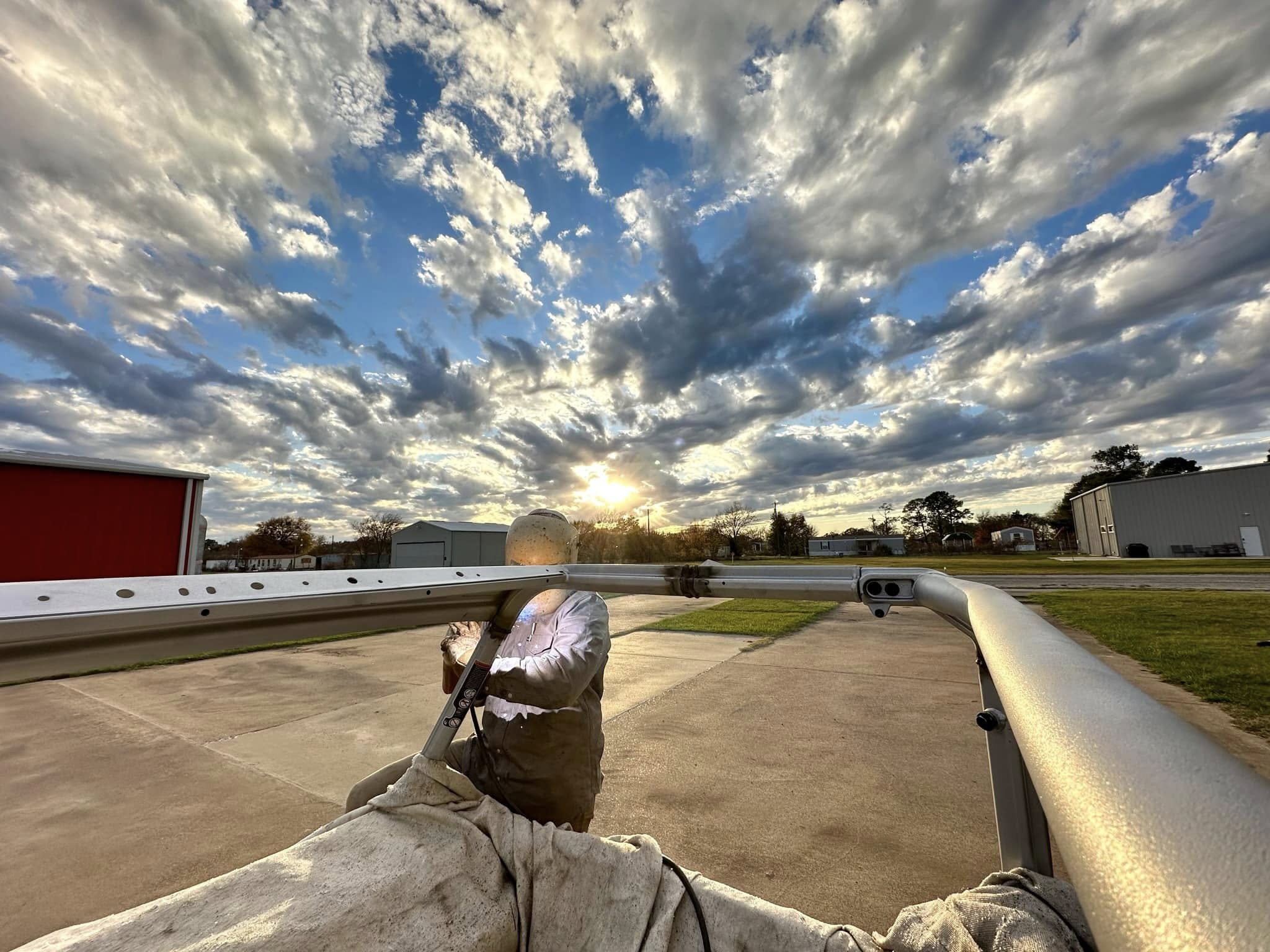
Mastering the Art of Welding: Techniques from Dean's Welding ClayCee Kjeldgaard Oct 06, 2025
Welding, at its core, fuses materials together by melting metal parts. While it might sound straightforward, the process involves various complex techniques and requires a deep understanding of materials and tools. At Dean's Welding, we emphasize three fundamental techniques: MIG welding, TIG welding, and Stick welding, each suited for different applications and materials.
MIG welding, or Metal Inert Gas welding, is one of the most user-friendly welding techniques. It's ideal for beginners due to its simplicity and speed. MIG welding involves feeding a wire electrode through a handheld torch, melted and consumed to join metal parts. It's particularly effective for joining metal sheets and is commonly used in auto body repairs and fabrication tasks. By using a shielding gas, often argon mixed with CO2, MIG welding ensures a clean weld with minimal spatter.
TIG welding, or Tungsten Inert Gas welding, is often regarded as the most precise form of welding. It provides welders with the ability to produce high-quality, detailed welds, making it perfect for projects that require aesthetic appeal or delicate work. Unlike MIG welding, TIG welding requires the welder to manually feed filler metal into the weld pool. This technique demands greater skill but results in stronger and more visually appealing joints. Due to its intricate nature, TIG welding is commonly used for thin materials such as stainless steel and aluminum.
Stick welding, or Shielded Metal Arc Welding (SMAW), is another vital technique we've mastered at Dean's Welding. This method is highly versatile and can be used on a variety of materials. It’s particularly valuable in outdoor and rough conditions since it does not rely heavily on shielding gas. Instead, the flux covering the electrode generates a protective gas and slag when the electrode melts, shielding the weld from contaminants in the air. Despite its simplicity, stick welding requires practice to handle the rod properly and to maintain a steady arc.
Understanding the intricacies of welding techniques is only part of what makes one an adept welder. At Dean's Welding ClayCee Kjeldgaard, we believe practice, along with proper safety procedures, plays a crucial role. Welding can expose individuals to hazards such as ultraviolet radiation, sparks, and toxic fumes. Therefore, wearing protective gear, including gloves, helmet, and appropriate clothing, is non-negotiable. Regularly inspecting your equipment ensures that you work in safe conditions, minimizing any risk of injury.
For those aiming to excel in welding, consistency and a commitment to learning are key. Experimenting with different materials and techniques not only hones your skills but also expands your adaptability in the field. By partnering with a trusted welding service like Dean's Welding, you gain access to expert advice and high-quality tools that foster a deeper understanding of the craft.
In conclusion, mastering the art of welding requires dedication, skill, and continuous learning. At Dean's Welding ClayCee Kjeldgaard, we are committed to helping you elevate your welding capabilities through understanding key techniques, ensuring safety, and striving for excellence. Whether you're a beginner forging your path or a seasoned professional seeking to refine your skills, welding mastery is within reach with the right guidance and mindset.
/filters:no_upscale()/media/ed465bb5-9c00-46db-9c8b-53bdac89e450.jpeg)